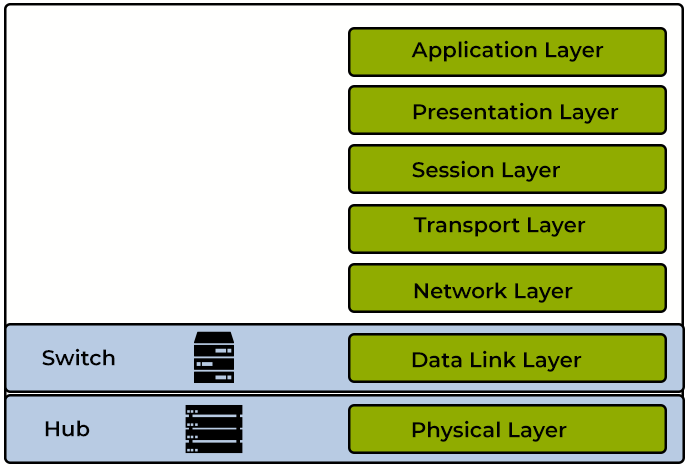§2024-05-14
Switches are key building blocks for any network. They connect multiple devices, such as computers, wireless access points, printers, and servers; on the same network within a building or campus. A switch enables connected devices to share information and talk to each other. Unmanaged switches
An unmanaged network switch is designed so that you can simply plug them in and they work, no configuration required. Unmanaged switches are typically for basic connectivity. You'll often see them used in home networks or wherever a few more ports are needed, such as at your desk, in a lab, or in a conference room.
Managed switches
Managed switches give you greater security and more features and flexibility because you can configure them to custom-fit your network. With this greater control, you can better protect your network and improve the quality of service for those who access the network.
A network switch works at the data link Layer 2 of the architecture of Open Systems Interconnection (OSI). It accepts packets from access points linked to physical ports and then sends them only via the ports going to a destination device.

Even though switches typically perform functions at Layer 2, they can perform at Layer 3. This is necessary to allow virtual local area networks (VLANs) — i.e., logical network segments that extend beyond subnets. Traffic must pass between switches to move from one subnet to another, which is made easier by their built-in routing capabilities.
The MAC address database is empty at the outset, and when a switch receives data, it checks the originating MAC address field of the incoming frame. It populates the MAC address database with the source MAC addresses and the switch port collecting the packet. The switch will eventually have a wholly populated MAC address table as each connected device delivers something. One may then utilize this table to advance frames to their desired location intelligently.
- MAC Address Lookup: The switch checks its MAC address table to find the port associated with the destination MAC address. If the MAC address is already in the table, the switch knows which port to forward the packet to. If the MAC address is not in the table, the switch broadcasts the packet to all ports except the one it was received on, in order to learn the port associated with that MAC address.